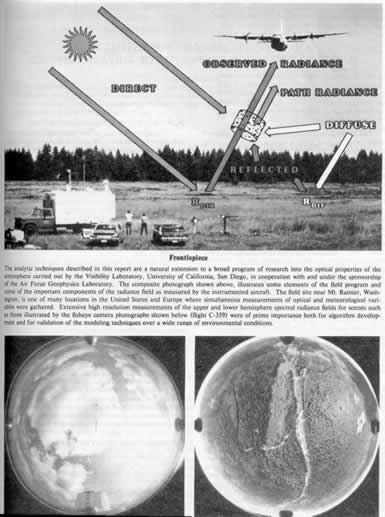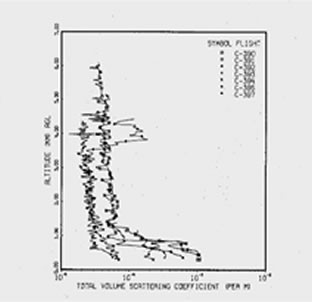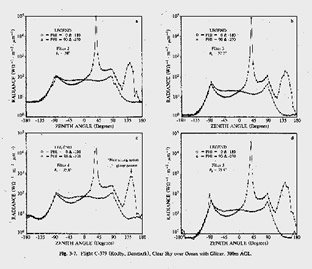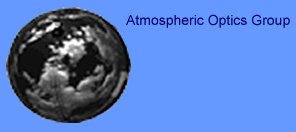|
|
Image
Transmission
Instrumented C-130 Aircraft used for experimental research in Contrast
Transmittance and Visibility.
For many years, the Air Force Geophysics Laboratory supported an extensive
program in the measurement of atmospheric optics. The goal was to measure
everything which affects seeing conditions through the atmosphere, or
more specifically, the contrast transmission through the atmosphere. Data
from this period include many vertical profiles through the atmosphere
of scattering coefficients (see
Johnson 1981a, for example), along with relative humidity and other
related parameters such as drop size distribution (Fitch
and Cress, 1981).

Measured absolute radiance distributions were acquired of the upper and
lower hemisphere (ie both above and below the aircraft) under a variety
of conditions (ref Johnson
1981d and Johnson and Hering 1981b). The desire to replicate these
radiance distributions simultaneously and at higher resolution provided
part of the inspiration for the Whole Sky
Imagers. A quite large library of radiance distributions was obtained,
and are still used by MPL and provided to others on occasion.
The
figures below show typical C-130
data. The first plot shows the altitude profiles of total volume scattering
coefficient for several flights in Germany. The second set of plots shows
the measured radiance distribution at low altitude over water. The x axis
is the zenith angle from -180 (the nadir) through -90 (horizon), 0 (zenith),
and 90 (opposite horizon), to 180 (nadir). Data of this type is available
in several reports in the Publications
section.



Produced
by the Marine Physical Laboratory, SIO.
Send questions, comments and suggestions about the Atmospheric Optics
Group website to:
webmaster@mpl.ucsd.edu
Copyright © 2002.
 |
Official web page of the University of California, San Diego |
|

